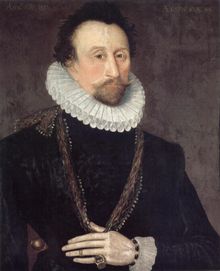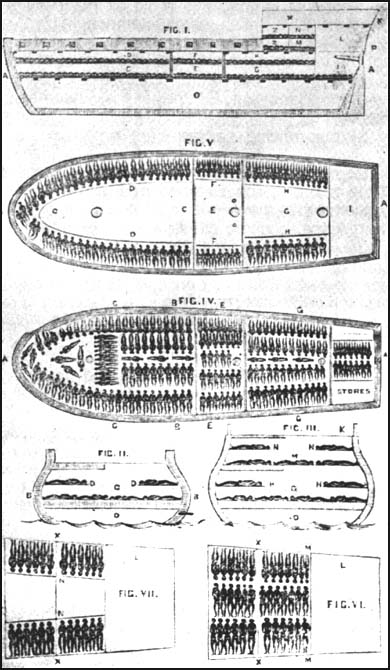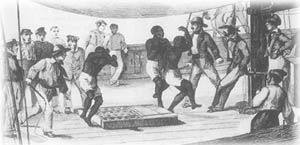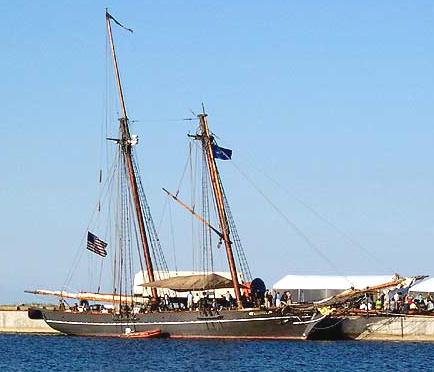The first English man to bring slaves out of Afrika was a man called John Lok, who was a London trader. in 1555 he brought 5 slaves from Shama (now Ghana) to London.
The second slaver was a man called William Towerson, his fleet sailed from Afrika into Plymouth following his voyage of 1556.

Hawkins was a religious man who insisted that his crew "serve God daily" and "love one another". His ship was called "the Good ship Jesus".

Life for the newly captured Afrikan aboard the slave ship was not pleasant, for most if not all of the captives this was their first experience at sea. They were only fed the barest minimum of food to keep them alive during the long passage, hygeine was non existant for them, they ate, defecated and slept in the same place. Their only means of exercise was the dance they were forced to perform on deck daily.
An estimated 15 million Africans were transported to the
Chained together by their hands and feet, the slaves had little room to move. It has been estimated that only about half of the slaves taken from Africa became effective workers in the

In 1839 Africans being carried from Havana, cuba, to p[uerto Principe, Cuba, revolted against their captors aboard La Amistad. Their transport form Africa to the Americas was illegal, and they were fraudulently described as having been born in Cuba. After the revolt, the Africans demanded to be returned home, but the ship's navigator deceived them about their course, and sialed them north along the North American coast to Long Island, New York. The schooner wwas subsequently taken custody by the UNited States NAvy and the African, who were deemed salvage form the vessel, were taken to Connecticut to be sold as slaves. There ensued a widely publised court case about the ship and the legal status of the African captives. This incident figured prominently in the abolitionism in the United states.
La Amistad - replica schooner sail boat
